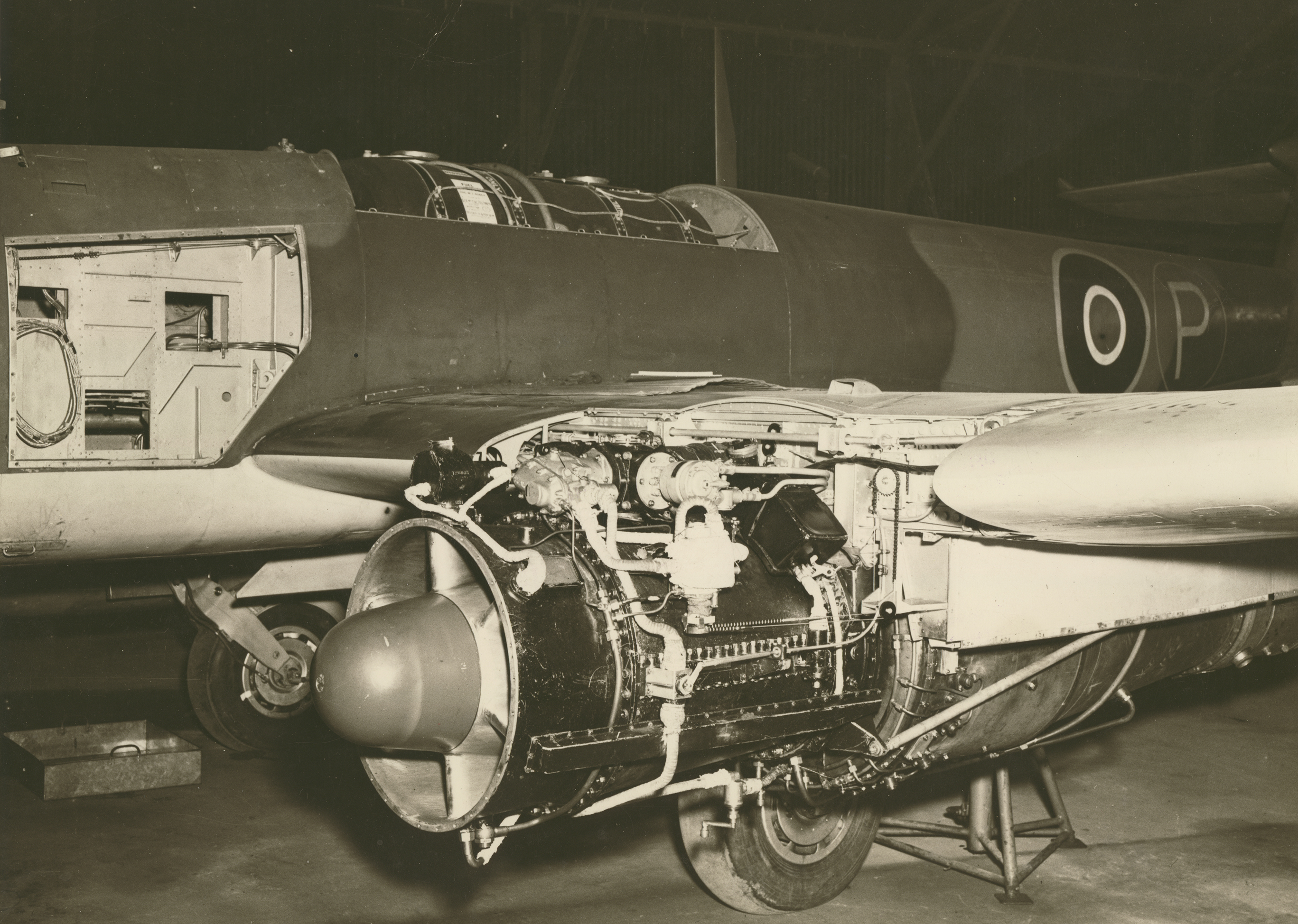- Joined
- 27 May 2008
- Messages
- 1,179
- Reaction score
- 2,485
Inspired by the “What if the gas turbine hadn’t happened“ I always thought of a different angle. This considers what would have happened if just two men had a different mindset at just one meeting?
Ref “Genesis of the Jet” John Golley.
This book documents Frank Whittle struggle to develop the jet engine. It records that in approx Oct/Nov 1929, Frank, aged just 22 gets a personal meeting with Mr W L Tweedie RAE Director of Engine Development and Mr A A Griffith RAE Director of Research. In summary, the meeting doesn’t go well for Frank, both the seniors have a different agenda’s and arrogantly dismiss the youngster. From the following chapters it’s clear that this delays the U.K. development effort by at least 5 years. Note although a few others before Frank might have drawn some sketches, or even filed patents, history proved that Frank had the engineering/mathematical/organisational skills to develop the hardware;- it was getting the money and resources that took the time.
So What if the Tweedie/Griffith meeting had embraced Franks invention and thrown the RAE behind it...... what would have happened next?
Let me give you an idea where this could have gone;-.
In early 1930, Frank leads a small team of engineers hand picked at the RAE. Progress is dictated by materials development so is initially slow. Gradually the break throughs occur and in great secrecy an engine roars into life in Sept 1934. Initially aimed as surprise entry in the Schindler races, secrecy is maintained and a certain Reggie Mitchel is asked to produce a suitable airframe, the S-10. By the time the first S-10 prototype is coming together events in Europe are turning for the worst so the military take over the program, developing a military version calling it the Jetfire. Chamberling is keen to avoid an arms race with German so will only accept the Jetfire development continues in unprecedented secrecy, so the flight testing is undertaken at Cold Bay in Canada..... a kinda 1930’s Groom lake. In Oct 1936 the S10 flies (with convention LG), followed by the first Jetfire in Feb 1937. The development is rapid and Cold Lake even works up the first squadrons. In the summer of 1939 the U.K. announces the existence of Jetfire squadrons within the home defence. Some of these deploy to Poland and France. In September 1939 Goering tells Hitler his Luftwaffe is obsolete and in incapable of supporting his invasion plans.
I’ll stop there. Other versions of 1930 onwards are welcome.
Ref “Genesis of the Jet” John Golley.
This book documents Frank Whittle struggle to develop the jet engine. It records that in approx Oct/Nov 1929, Frank, aged just 22 gets a personal meeting with Mr W L Tweedie RAE Director of Engine Development and Mr A A Griffith RAE Director of Research. In summary, the meeting doesn’t go well for Frank, both the seniors have a different agenda’s and arrogantly dismiss the youngster. From the following chapters it’s clear that this delays the U.K. development effort by at least 5 years. Note although a few others before Frank might have drawn some sketches, or even filed patents, history proved that Frank had the engineering/mathematical/organisational skills to develop the hardware;- it was getting the money and resources that took the time.
So What if the Tweedie/Griffith meeting had embraced Franks invention and thrown the RAE behind it...... what would have happened next?
Let me give you an idea where this could have gone;-.
In early 1930, Frank leads a small team of engineers hand picked at the RAE. Progress is dictated by materials development so is initially slow. Gradually the break throughs occur and in great secrecy an engine roars into life in Sept 1934. Initially aimed as surprise entry in the Schindler races, secrecy is maintained and a certain Reggie Mitchel is asked to produce a suitable airframe, the S-10. By the time the first S-10 prototype is coming together events in Europe are turning for the worst so the military take over the program, developing a military version calling it the Jetfire. Chamberling is keen to avoid an arms race with German so will only accept the Jetfire development continues in unprecedented secrecy, so the flight testing is undertaken at Cold Bay in Canada..... a kinda 1930’s Groom lake. In Oct 1936 the S10 flies (with convention LG), followed by the first Jetfire in Feb 1937. The development is rapid and Cold Lake even works up the first squadrons. In the summer of 1939 the U.K. announces the existence of Jetfire squadrons within the home defence. Some of these deploy to Poland and France. In September 1939 Goering tells Hitler his Luftwaffe is obsolete and in incapable of supporting his invasion plans.
I’ll stop there. Other versions of 1930 onwards are welcome.

